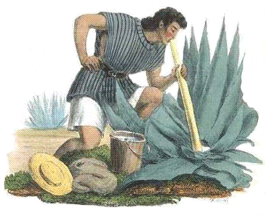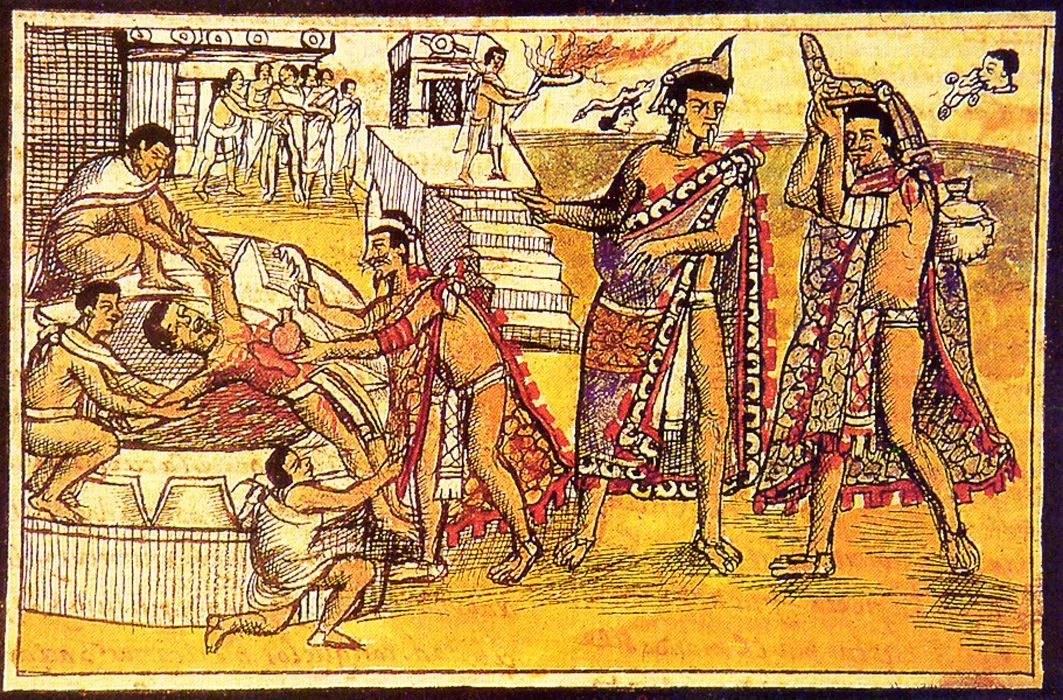Hello my Steemian friends and welcome back to my blog about psychoactive plants. First of all I do not grow any of these plants in my backyard or anywhere else. And this blog is not an instruction to consume any of these plants, but only to inform. If you consume something for the first time please begin with a low dosage. It's better to take too little than too much. You can always use more next time because if you take too much, the effects can cause great discomfort or even result in death.

In the third episode I will present to you Agaves, also known as Mezcal Plants. Many species of the Agaves are used for fermented beverages like pulque and distilled spirits like tequila and mescal.
History
In prehistoric times, about 8000 years ago, agave was already important in Mexico as a source of food, drug, and for some species, even as poison. According to Aztec historical records, pulque, a fermented juice, was consumed at tribal festivals. Today, agaves are primarily used in the production of tequila.
Psychoactive Material
Aguamiel "honey water", this is the sugary juice that collects in the shaft of the plant under the leaf crown, before the plant is ready to develop. This honey water ferments as a result of microbial activity. The plant creates the fermented drink, known as pulque , itself.

Preparation and Dosage
The juice can be tapped during the fermentation or when its fermented in a tub. Pulgue contains 3-4% alcohol. Too improve and to enhance the psychedelic effects various plants have been added to the pulque. For example some Indian tribes fortify it with leaves or roots from Datura innoxia. In Mexico it's usual to use marijuana flowers as additives. Also during shamanic rituals , large doses of distilled liquor from agaves with added lophophora williamsii or peyote, were consumed. The mescaline which is included in the lophophora williamsii strongly inhibits the effects of alcohol.
Ritual Use
Among the Aztecs, pulque was a holy drink that could be drunk during ritual events. It was limited to four bowls. But men over seventy years, were allowed to drink until they were intoxicated. The beverage was also used for human sacrifices. Before the ceremony, the human who is to be to sacrifice was required to drink four bowls of pulque with datura innoxia added. Then, their beating hearts were torn from their still-living bodies.
Also pulque was used during sexual magical rites and even today its still used as an aphrodisiac, just like tequila and mezcal.

Medical Use
Different species of agaves are used in folk medicine. For example they are used to treat wounds, snake bites, skin diseases, foot fungus, sexually transmitted diseases, toothaches, rheumatism and diarrhea.
Ingredients
Pulque contains 2-4% alcohol
Effects
The effects of pure pulque are related to palm wine and chicha. A pulque intoxication remains clearer than a beer intoxication. Pulque with added psilocybe is not simply intoxicating, but also hallucinogenic.
It is said that the mezcal worm, a larva, that is added to some mezcal spirits should be eaten whole if a psychoactive effect is desired. Two or three worms is considered an effective dosage.
If you missed some episodes:
Episode 1: Aconitum
Episode 2: Acorus Calamus
See you next time and Merry Christmas to all of you!
Vladi